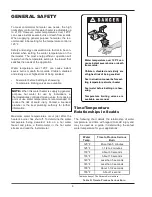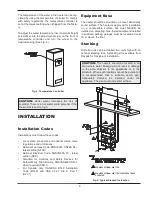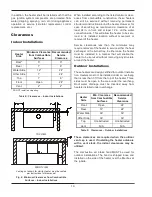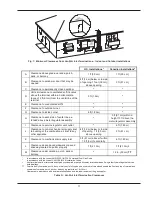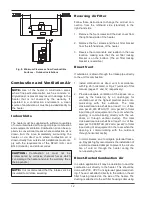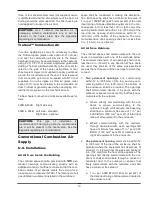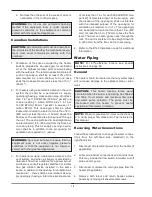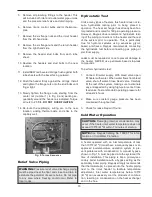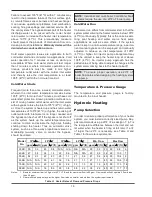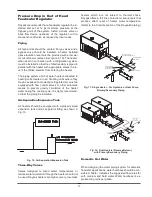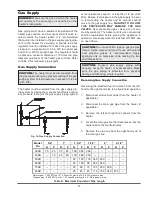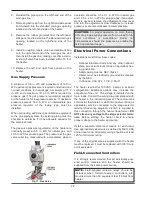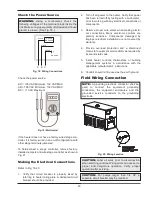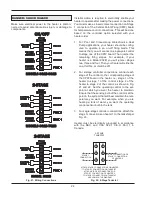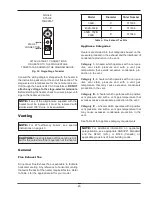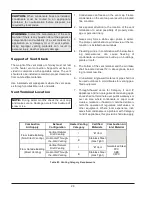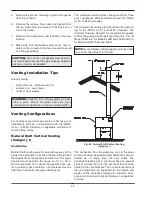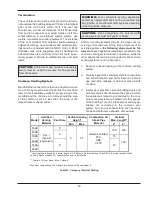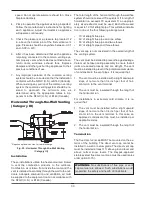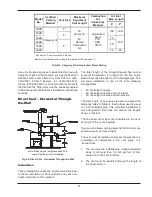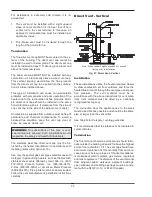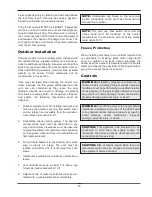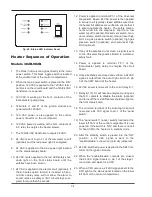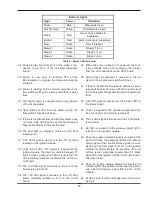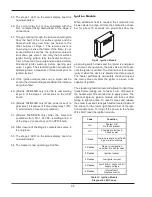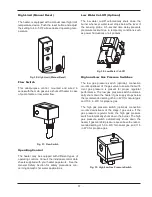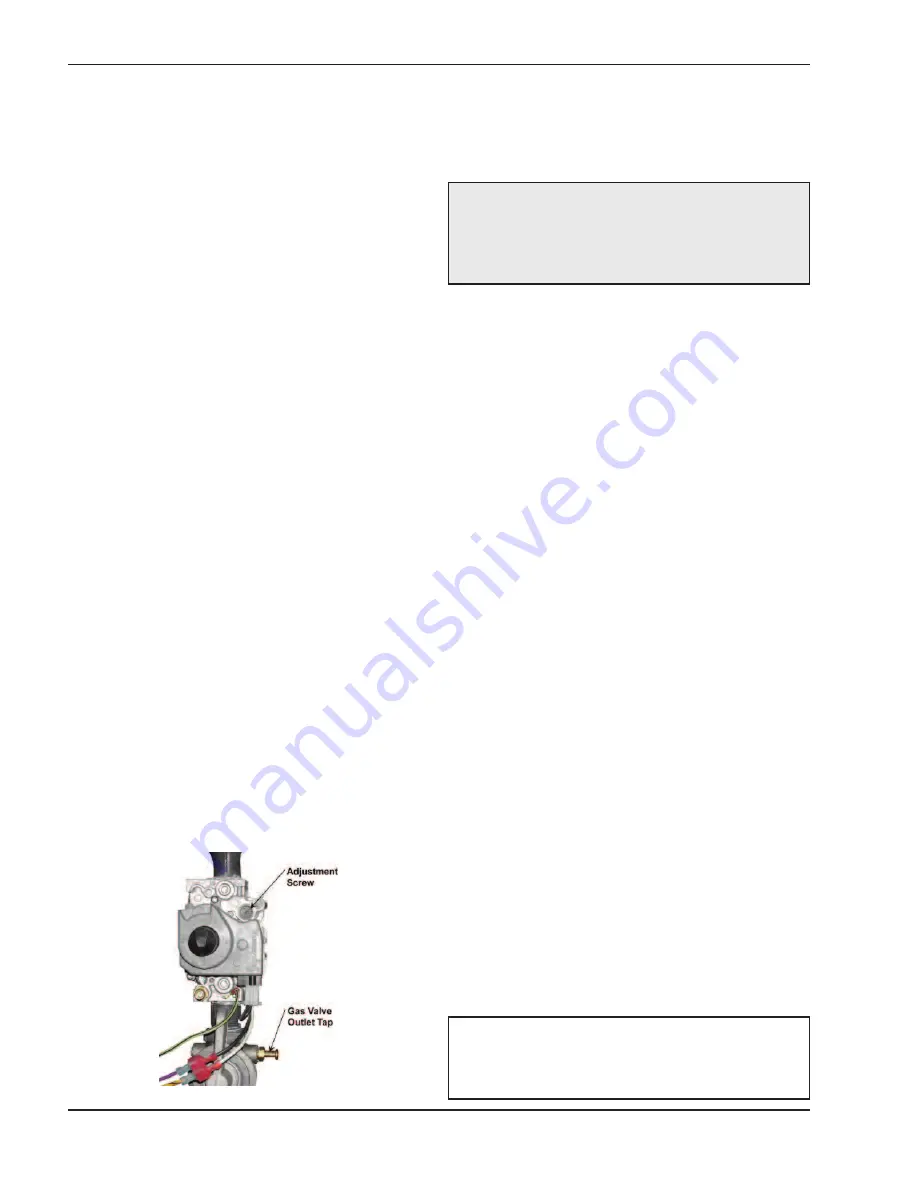
22
6. Reinstall the pipe cap on the left-hand end of the
main gas line.
7. Remove plastic cap from the right-hand side panel
and reinstall into the standard main gas opening
located on the left-hand side of the heater.
8. Remove the rubber grommet from the left-hand-
side panel and reinstall into the standard main gas
opening, located on the right-hand side of the
heater.
9. Install a coupling, nipple, union and sediment trap
onto the right-hand end of the main gas line and
then install the gas line, making sure that a manu-
al shut-off valve has been installed within 10 ft of
the heater.
10. Replace the left and right front panels on the
heater.
Gas Supply Pressure
A minimum of 5.0 in. WC and a maximum of 10.5 in.
WC upstream gas pressure is required under load and
no-load conditions for natural gas. A minimum of 11.0
in. WC and a maximum of 13.0 in. WC is required for
propane gas. The gas pressure regulator(s) supplied
on the heater is for low-pressure service. If upstream
pressure exceeds 14.0 in. WC, an intermediate gas
pressure regulator, of the lockup type, must be
installed.
When connecting additional gas utilization equipment
to the gas piping system, the existing piping must be
checked to determine if it has adequate capacity for
the combined load.
The gas valve pressure regulator(s) on the heater are
nominally preset at 3.5 in. WC for natural gas, and
10.5 in. WC for propane gas. The pressure at the gas
valve outlet tap, measured with a manometer, while in
Fig. 17: Gas Valve
operation should be 3.5 ± 0.1 in. WC for natural gas
and 10.5 in. ± 0.1 in. WC for propane gas. If an adjust-
ment is needed, remove the adjustment screw cover
and turn the adjustment screw clockwise to increase
pressure or counter-clockwise to lower pressure.
Electrical Power Connections
Installations must follow these codes:
•
National Electrical Code and any other national,
state, provincial or local codes or regulations hav-
ing jurisdiction.
•
Safety wiring must be NEC Class 1.
•
Heater must be electrically grounded as required
by the NEC.
•
In Canada, CSA C22. 1 C.E.C. Part 1.
The heater is wired for 120 VAC, 8 amps in its basic
configuration. Additional options may increase the
amp draw of the unit. The voltage is indicated on the
tie-in leads. Consult the wiring dia-gram shipped with
the heater in the instruction packet. The remote tank
control stat, thermostat, or electronic heater control (as
applicable) may be connected to the stage selector
terminal (See wiring diagram). 24 VAC is supplied to
this connection through the heater trans-former.
DO
NOT attach any voltage to the stage selector termi-
nals.
Before starting the heater check to ensure
proper voltage to the heater and pump.
Install a separate disconnect means for each load.
Use appropriately sized wire as defined by NEC, CSA
and/or local code. All primary wiring should be at least
125% of minimum rating.
If any of the original wire as supplied with the heater
must be replaced, it must be replaced with 105°C wire
or its equivalent.
Field-Connected Controllers
It is strongly recommended that all individually-pow-
ered control modules and the heater should be
supplied from the same power source.
NOTE:
Field-supplied isolation relays should be
installed when field-connected controllers are
mounted more than 50 equivalent feet (18 Ga) from
heater.
CAUTION:
For proper operation, no more than a
30% drop in gas supply pressure from no-load to full-
load conditions is acceptable. Under no
circumstances should the pressure be outside the
listed operational range.
Summary of Contents for HI DELTA 302B
Page 45: ...45 Wiring Diagram...
Page 59: ...59...

